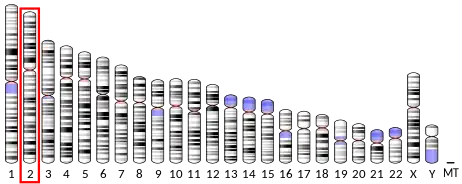| ASIC4 | |||||||||||||||||||||||||||||||||||||||||||||||||||
|---|---|---|---|---|---|---|---|---|---|---|---|---|---|---|---|---|---|---|---|---|---|---|---|---|---|---|---|---|---|---|---|---|---|---|---|---|---|---|---|---|---|---|---|---|---|---|---|---|---|---|---|
| Identifiers | |||||||||||||||||||||||||||||||||||||||||||||||||||
| Aliases | ASIC4, ACCN4, BNAC4, acid sensing ion channel subunit family member 4 | ||||||||||||||||||||||||||||||||||||||||||||||||||
| External IDs | OMIM: 606715 MGI: 2652846 HomoloGene: 11166 GeneCards: ASIC4 | ||||||||||||||||||||||||||||||||||||||||||||||||||
| |||||||||||||||||||||||||||||||||||||||||||||||||||
| |||||||||||||||||||||||||||||||||||||||||||||||||||
| |||||||||||||||||||||||||||||||||||||||||||||||||||
| |||||||||||||||||||||||||||||||||||||||||||||||||||
| |||||||||||||||||||||||||||||||||||||||||||||||||||
| Wikidata | |||||||||||||||||||||||||||||||||||||||||||||||||||
| |||||||||||||||||||||||||||||||||||||||||||||||||||
Acid-sensing ion channel 4 (ASIC4) also known as amiloride-sensitive cation channel 4 (ACCN4) is a protein that in humans is encoded by the ASIC4 gene. The ASIC4 gene is one of the five paralogous genes that encode proteins that form trimeric acid-sensing ion channels (ASICs) in mammals.[5] The cDNA of this gene was first cloned in 2000.[6][7] The ASIC genes have splicing variants that encode different proteins that are called isoforms.
These genes are mainly expressed in the central and peripheral nervous system.
ASICs can form both homotrimeric (meaning composed of three identical subunits) and heterotrimeric channels.[8]
Structure and function
This gene encodes a member of the ASIC/ENaC superfamily of proteins.[9] The members of this family are amiloride-sensitive sodium channels that contain intracellular N and C termini, 2 hydrophobic transmembrane (TM) regions, and a large extracellular loop, which has many cysteine residues with conserved spacing. The TM regions are generally symbolized as TM1 (clone to N-terminus) and TM2 (close to C-terminus).
The pore of the channel through which ions selectively flow from the extracellular side into the cytoplasm is formed by the three TM2 regions of the trimer. [5]
References
- 1 2 3 GRCh38: Ensembl release 89: ENSG00000072182 - Ensembl, May 2017
- 1 2 3 GRCm38: Ensembl release 89: ENSMUSG00000033007 - Ensembl, May 2017
- ↑ "Human PubMed Reference:". National Center for Biotechnology Information, U.S. National Library of Medicine.
- ↑ "Mouse PubMed Reference:". National Center for Biotechnology Information, U.S. National Library of Medicine.
- 1 2 Hanukoglu I (2017). "ASIC and ENaC type sodium channels: Conformational states and the structures of the ion selectivity filters". FEBS Journal. 284 (4): 525–545. doi:10.1111/febs.13840. PMID 27580245. S2CID 24402104.
- ↑ Gründer S, Geissler HS, Bässler EL, Ruppersberg JP (2000). "A new member of acid-sensing ion channels from pituitary gland". NeuroReport. 11 (8): 1607–11. doi:10.1097/00001756-200006050-00003. PMID 10852210. S2CID 46420660.
- ↑ Gründer S, Geisler HS, Rainier S, Fink JK (2001). "Acid-sensing ion channel (ASIC) 4 gene: physical mapping, genomic organisation, and evaluation as a candidate for paroxysmal dystonia". Eur. J. Hum. Genet. 9 (9): 672–6. doi:10.1038/sj.ejhg.5200699. PMID 11571555.
- ↑ Babinski K, Catarsi S, Biagini G, Séguéla P (Sep 2000). "Mammalian ASIC2a and ASIC3 subunits co-assemble into heteromeric proton-gated channels sensitive to Gd3+". The Journal of Biological Chemistry. 275 (37): 28519–25. doi:10.1074/jbc.M004114200. hdl:11380/304669. PMID 10842183.
- ↑ Hanukoglu I, Hanukoglu A (Jan 2016). "Epithelial sodium channel (ENaC) family: Phylogeny, structure-function, tissue distribution, and associated inherited diseases". Gene. 579 (2): 95–132. doi:10.1016/j.gene.2015.12.061. PMC 4756657. PMID 26772908.
Further reading
- Chen X, Polleichtner G, Kadurin I, Gründer S (2007). "Zebrafish acid-sensing ion channel (ASIC) 4, characterization of homo- and heteromeric channels, and identification of regions important for activation by H+". J. Biol. Chem. 282 (42): 30406–13. doi:10.1074/jbc.M702229200. PMID 17686779.
- Donier E, Rugiero F, Jacob C, Wood JN (2008). "Regulation of ASIC activity by ASIC4--new insights into ASIC channel function revealed by a yeast two-hybrid assay". Eur. J. Neurosci. 28 (1): 74–86. doi:10.1111/j.1460-9568.2008.06282.x. PMID 18662336. S2CID 29369987.
- Sanger Centre, The; Washington University Genome Sequencing Cente, The (1998). "Toward a complete human genome sequence". Genome Res. 8 (11): 1097–108. doi:10.1101/gr.8.11.1097. PMID 9847074.
External links
- Human ASIC4 genome location and ASIC4 gene details page in the UCSC Genome Browser.
This article incorporates text from the United States National Library of Medicine, which is in the public domain.



